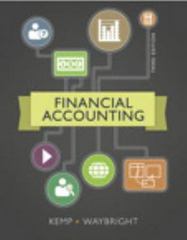The equity method: Select one: O a. Records any brokerage fees as expense O b. Is used to record and report strategic equity investments when the investor owns 20% to 50% of the investee's outstanding common shares. O c. All of the available choices. O d. Records the purchase of the investment at its original costHow many percent does a company typically need to own out of the common shares outstanding of an investee corporation to have a significant influence? Select one: O a. 10-20% O b. 50-70% O c. 20-50% O d. 30-40%If no fair value is readily available, debt investments purchased for the primary purpose of trading can be reporte at: out of Select one: O a. Historical Cost O b. Discounted Price O c. Present Value O d. Estimated PriceWhich of the following statement(s) is/are correct regarding investment with controlling influence? Select one: O a. If one shareholder or investor has a controlling influence, the investor has typically has the right to direct the operating and financial activities of the investee. O b. If one shareholder or investor owns more than 50% of a company's outstanding common shares, that investor typically has a controlling influence. O c. All of the available choices. O d. When one company purchases more than 50% of the outstanding shares of another company, the transaction is known as a business combination.Hamplet Company purchases 5,000 common shares in Xavier Corporation on January 1, 2020, at $100 per share. The 5,000 common shares represent 25% of Xavier's total outstanding common shares. The journal entry to record the initial purchase will include a debit to: Select one: O a. Investment in Xavier Corporation Shares O b. Cash O c. Long-term Investment - Shares O d. Short-term Investment - SharesUsing the fair value through net income method, an excess in value over the investment cost, prior to sale of that investment, should be recorded as: Select one: O a. Debit to Gain on Fair Value Adjustment, Credit Valuation Allowance for Fair Value Adjustment Q .b. Debit to Valuation Allowance for Fair Value Adjustment, Credit to Gain on Fair Value Adjustment O c. Debit to Valuation Allowance for Fair Value Adjustment, Credit to Unrealized Gain on Fair Value Adjustment O d. Debit to Unrealized Gain on Fair Value Adjustment, Credit Valuation Allowance for Fair Value Adjustment












